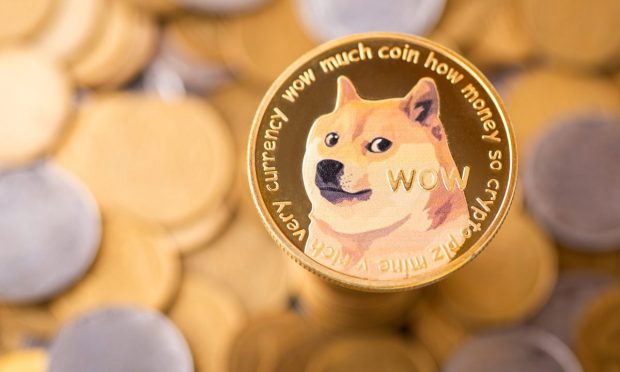McDonald’s Trolled Dogecoiner Elon Musk With Grimacecoin; Crypto Liked It

There’s a lesson here: Don’t make crypto jokes with your brand.
Twelve hours after Elon Musk tweeted out a promise to “eat a Happy Meal on TV” if McDonald’s accepted dogecoin, the fast food giant replied “only if @tesla accepts grimacecoin.” It was accompanied by a purple cartoon coin featuring Grimace, its purple blob-shaped cartoon character who joins Ronald McDonald, the Hamburgler and other in ads.
I will eat a happy meal on tv if @McDonalds accepts Dogecoin
— Elon Musk (@elonmusk) January 25, 2022
only if @tesla accepts grimacecoin https://t.co/CQrmAFelHR pic.twitter.com/to9HmYJhej
— McDonald’s (@McDonalds) January 25, 2022
Another 12 hours and there were more than a dozen real grimacecoin cryptocurrencies built on Ethereum (ETH), Binance Smart Coin (BSC), Avalanche (AVAX) listed on various unregulated decentralized exchanges (DEXs).
One of them, Coindesk reported, spiked briefly — very briefly — from $0.0007 to $2. That’s about 2,850x, or 285,000%.
There’s a temptation to write it all off as a joke in meme-happy cryptoland. After all, who’d take it seriously?
Well, that’s the thing. In crypto, lots of people. Not because they believe in it as a functional cryptocurrency, but because they’re hoping to buy before the spike ends, beating the next guy to the exit.
Which is, roughly, how you can profit from a Ponzi scheme, even if you know it’s a scam.
And bear in mind, dogecoin — the cryptocurrency that Elon Musk’s tweets have turned into a top 10 cryptocurrency by market capitalization with no actual projects built on it — started out as a Twitter joke that developers Billy Markus and Jackson Palmer whipped out in a couple of hours based on a silly shiba inu dog-faced internet meme. They even designed to be as unusable as possible — miners win a random reward of 0 to 1 million DOGE — and didn’t bother to keep any themselves, which is why neither is wealthy now.
But, it got a following that turned into small but serious and vocal user base over three years, until Tesla and SpaceX CEO Musk decided it was funny, and started tweeting about dogecoin to his tens of millions of followers. It’s a testament to his influence that there was surprise when DOGE only jumped 7% — something industry news outlet Cointelegraph described as a “weak Doge spike” that might indicate “fading” influence.
Also read: Elon Musk Moons Dogecoin, Showing the Power of His 66M Twitter fan-atics
But again, so what? DOGE buyers certainly weren’t harmed: After lingering for years below $0.003, its suddenly spiked last April, climbing to nearly 74 cents at one point, when Musk started tweeting about it. It’s currently around $0.15, so plenty of the faithful made a fortune even if they missed the high.
The problem is, there’s another, more recent potential crypto comparison for the various grimacecoins: Squid coin, a rug-pull scam in which investors lost almost $3.4 million.
Read more: 2021 Crypto Scams Top $7.7B, Fueled by DeFi-Friendly ‘Rug Pulls’
Playing on the popularity of the gruesome but hugely popular South Korean Netflix series Squid Games, Squid coin’s developers rode the hype up and then dumped all of their tokens on the market, making millions but draining all the liquidity and shooting the price to almost nothing.
See also: Creators of Squid Crypto Cash Out; Investors Lose $2M
While never quite claiming to be officially related to the TV show, the coin was marketed as a “play-to-earn” coin — which would suggest that a video game one can play is in the works.
Squid coin was built on crypto exchange Binance’s Smart Chain, so Binance’s security team has revealed it is investigating the project, looking for its creators and promising to turn any results over to appropriate legal authorities.
Squid coin, which launched in October, only lasted a few days. But the price of its token jumped more than 2,000% in that time.
And, it was a fairly obvious scam. The coin’s white paper was badly written and full of spelling and grammatical errors, and independent developers quickly noticed that funds could be invested but not withdrawn.
Which brings us around to the most important thing to remember about crypto: Caveat emptor — let the buyer beware — applies doubly in this market.
